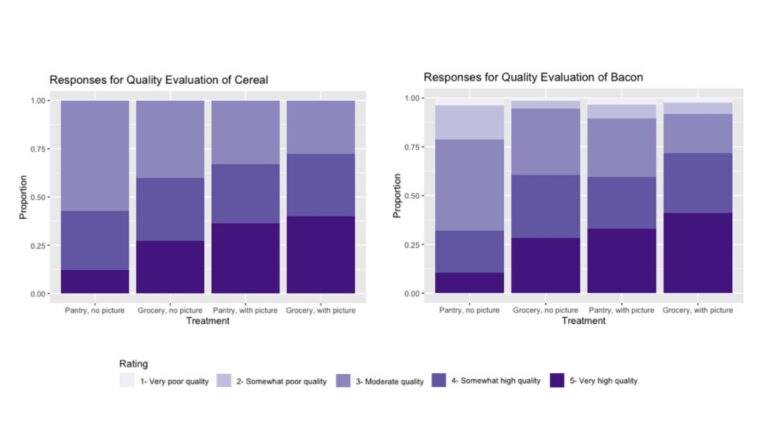Food Pantry Perception
Food pantries are an often stigmatized service in the United States, with many across the country expecting food quality to be lower if it comes from a pantry versus a traditional grocery store.

Read Time: 2 minutes
Published:
There are more than 34 million people who experience food insecurity in the United States, including 9 million children. Yet, only 30% of households facing food insecurity use food pantries, even though they are designed to alleviate emergency food needs and can even be used to address more long-term needs. While there may be several barriers to accessing food pantry services, shame and stigma are common reasons people don’t seek to access them.
Stigma is a complex and multilayered concept that, simply put, refers to any negative attitudes or false beliefs associated with an individual’s traits or circumstances. In the case of food pantries, the feeling of shame can be projected onto the food itself, known as product stigma, which refers to negative perceptions about food quality.
Researchers Anne Byrne and colleagues used an online survey distributed nation-wide in December 2020, during the height of COVID-19, to measure product stigma among low-income respondents. Participants were asked to rate the quality of cereal, bacon, yogurt, canned soup, and grapes after being randomly assigned to one of 4 possible study groups. Participants were told the items came from either a grocery store or food pantry, and they were then shown either a photo that included brand information or no photo at all.
The first two columns of the above figures show that respondents expected food quality to be higher when told the food came from a grocery store and the last two columns show how pictures increased expectation for good quality significantly. The researchers note the impact of the product photo was larger amongst those who had never used food pantry services before.
The researchers conclude that marketing pantry food using photos and brand names to highlight the quality of the products may reduce negative perceptions of pantry food. Marketing reminds people that they have choices even when they have limited means, and it may encourage food-insecure individuals to utilize food pantry services to supplement their nutritional needs.
Databyte via Anne T. Byrne, David R. Just, Christopher B. Barrett. But it came from a food pantry: Product stigma and quality perceptions of food pantry offerings. The Journal of the International Association of Agricultural Economists, 2023.



